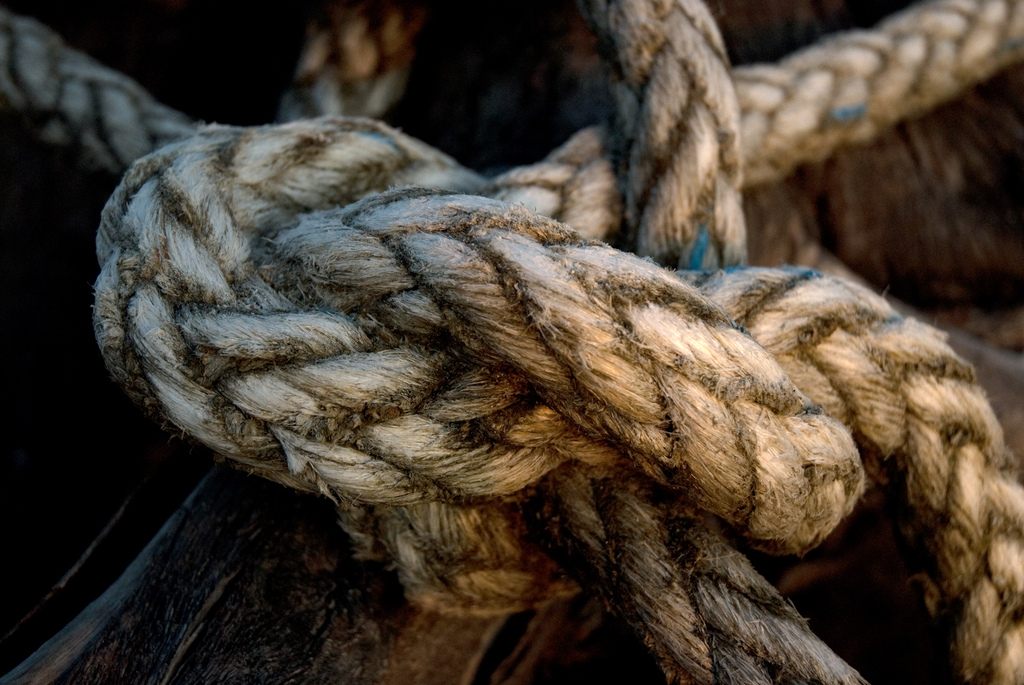Keeping the Art of Knot Tying Alive
A guild of knotters won’t let this historic craft die.

As new technologies revolutionize and streamline our lives, more and more traditional crafts are falling by the wayside or becoming the domain of hobbyists. Among those that were once ubiquitous, but are becoming more obscure is the art of knot tying—once an essential skill in professions ranging from sailing to farming and today becoming a more and more specialized craft, as the number of people who use the traditional methods of knotting dwindle.
But there are still those, such as the members of the International Guild of Knot Tyers, who are working to make sure that these disappearing skills don’t unravel. The Guild was started in 1982 by Des Pawson, an expert knot tier, and Geoffrey Budworth, a police officer who was no slouch in the knotting department either. Uniting over a love of a new knot that was invented in the 1970s, the Hunter’s Bend, the duo soon came upon the idea of seeking out other knot enthusiasts. Eventually the Guild was formed, becoming an official U.K. charity, complete with government oversight.
“I became interested in knots when I was young, partly as a boy scout and partly as a sailor,” says Colin Byfleet, who is currently serving as the IKTG’s Secretary to the Trustees. “I’m about 74 now, and as I was coming up on retirement, I was living in France at the time, I met a group of people who were demonstrating knots, and that’s where it all started. I thoroughly enjoyed it.”
Byfleet’s lifelong interest in knots may have led him to his involvement with the Guild, but people come from a variety of different points of appreciation for the craft.

Byfleet, for instance, says that he’s most interested in the math and science behind knots, including how modeling projected knots can lead to surprising discoveries about their geometry. He says there are a number of mathematicians who are part of the Guild: “We have a spectrum, from a pure mathematician, all the way through to people who may be unemployed and just do it for fun.”
Expert knotting is generally considered to belong to the maritime world, but members of the Guild use their knowhow for a wide variety of uses. A deep knowledge of knots is needed everywhere from the rigging of Cirque du Soleil acrobats to law enforcement agencies who use forensic knotting, studying and identifying knots to help solve criminal cases in the same way one might study handwriting. “It’s a bit like folding your arms,” says Byfleet. “Even if you tie simple knots, you tend to tie them the same way.”
Some members of the Guild prefer to focus on the related craft of rope-making, which in and of itself is a very particular art. Byfleet told us that he knows of Guild members whose focus is on church bell ropes, which need to be made in such a way that they stretch when pulled, making the sound of the bell less harsh and more musical.
While members might join the IGKT for different reasons, the Guild’s goal is always education, getting the word out about the joy of knots, and passing on the craft. They hold around 100-200 events around the world each year, where experts and aficionados come to hold seminars and show off their skills. While there is no directly competitive aspect to the events, the Guild does hold a handful of exhibitions each year to let the most skilled knot tyers, who can create knots with the most finesse and speed, show off their stuff. In an effort to get more kids interested in knots, they’ve also held speed tying contests, which Byfleet says were a pretty big hit.
The Guild isn’t a massive organization, but it does have a healthy roster of around 1,000 devoted members, spread across the world. As Byfleet says, there are an infinite number of knots, so it’s possible that that the Guild will continue to grow. Most standard types of knots, though, have already been catalogued in such books as The Ashley Book of Knots—the closest thing the Guild has to a bible.
With the rise of the internet, where people can share their techniques and skills at the touch of a button, Byfleet says that he can see a day when the Guild no longer serves a purpose, since knot knowledge is now readily available, and communication between experts has never been easier. But it doesn’t seem to bother him. “It might [disappear,] but it wouldn’t worry me if it did, because its purpose is being fulfilled anyway.” As he says, learning something from an actual person is still better than just picking it up on the internet.

























Follow us on Twitter to get the latest on the world's hidden wonders.
Like us on Facebook to get the latest on the world's hidden wonders.
Follow us on Twitter Like us on Facebook